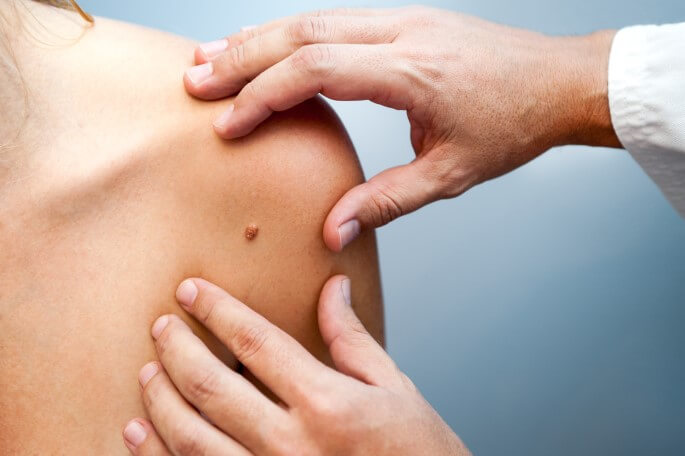Made famous by icons like Marilyn Monroe and Cindy Crawford, a mole can be seen as a distinguishing beauty mark that makes you stand out from others. While some moles are nothing more than harmless birthmarks, some can be signs of something more dangerous.
At Dermatology and Skin Cancer Center in Windermere, we stress the importance of prevention and early detection of skin issues. Being aware of new and changing moles and spots can help prevent them from turning into more serious conditions like skin cancer. We can address many skin concerns including moles, acne, rosacea and psoriasis while also offering aesthetic services to keep your skin looking its best. Contact us today to schedule your consultation with one of our medical team members.
Congenital moles
These are the ones that approximately 1 percent of the population has when they’re born. Due to the wide variance in size and shape, the congenital moles to most be concerned about are ones larger than 2 cm.
Acquired moles
These quarter-inch moles develop during a person’s childhood or late teen years as a result of sun exposure. In some cases, that development may continue until a person reaches the age of 40. Acquired moles are more common among those with fair skin.
Atypical moles
These are larger moles that have a unique look and affect roughly 20-40 percent of the population. They tend to be genetic in nature and are considered much more dangerous with regard to the possibility of skin cancer. The risk increases if a family member has suffered from melanoma.
Detecting any melanoma at an early stage will allow a person to stay on top of their health. Warning signs can be spotted through monthly self-exams and regular visits to the dermatologist. What’s known as the ABCDE method of melanoma detection shows you what to look for in moles. This method highlights certain warning signs and is a good tool for keeping an eye on existing moles.
- Asymmetry: A mole should look the same all around, so if a portion of the mole is misshapen or discolored, that should raise a red flag.
- Border: In this case, the edges of the mole aren’t really defined, or it’s irregular or scalloped.
- Color: A mole should have the same color all around. If multiple colors develop – such as red, white, black, blue or brown – it becomes a cause for concern.
- Diameter: Diagnosing melanoma will require looking at the size of a mole, and any (outside of congenital ones) that are greater than 6mm (roughly the size of a pencil eraser) may require further analysis.
- Evolution: A mole should remain consistent over time, so one whose shape, color or size changes should be watched closely.
Moles can be cute, but they can also be dangerous. The need for regular exams with a dermatologist is a necessity for those who may be most at risk. At minimum, it should take place at least once a year but more often for those with a genetic history with melanoma.

